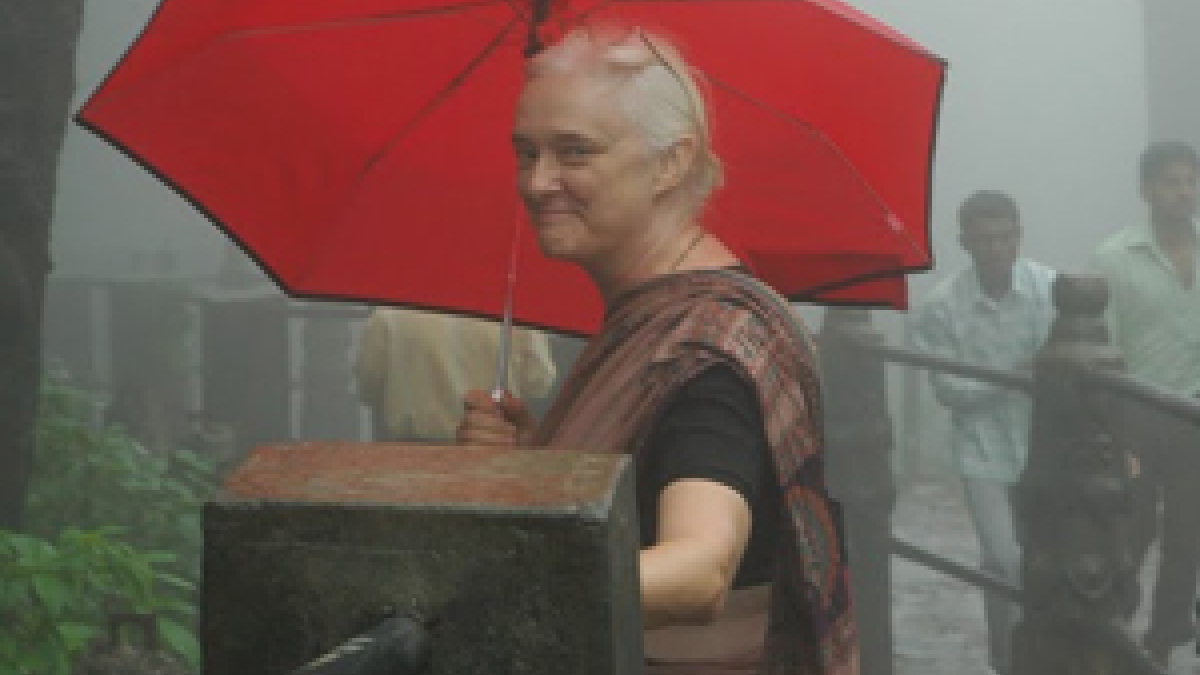India and the imagination: ASU researchers study place

ASU researchers, awarded a grant from the National Endowment for the Humanities, are studying places in India that are both religiously significant and environmentally sensitive.
The research project brings together Anne Feldhaus, a religious studies scholar from the School of Historical, Philosophical and Religious Studies, and Megha Budruk, a natural resource social scientist from the School of Community Resources and Development.
The project addresses a vitally important need to integrate the study of ritual, devotion, aesthetics, and the religious imagination with an understanding of the economic, social and political relations that form the context within which the rituals are performed, the devotion is experienced, and the religious imagination thrives.
When – as is so often the case, both in India and in other parts of the world – the religious emotions and ideas are directed toward and set within a natural environment that is also the focus of strong economic, social and political interests, there is an equally vital need to understand how the various interests, emotions, and ideas can be adjudicated within the structures of a secular democracy.
“For some decades now, Religious Studies has been paying attention to the intersections of politics and religion," Feldhaus says. "For more than a century, scholars have been interested in the social aspects of religion. I think we also need to examine seriously the economic and administrative aspects of religious phenomena, as well as their material ties to the natural world. Our project will provide an example of how to carry out this kind of study."
As a collaboration initially supported by the Institute for Humanities Research, who awarded the pair a seed grant to explore the topic, the project will enrich both the fields of religious studies and social science and will enable Feldhaus and Budruk to carry out the work in a way that neither could accomplish alone.
“For me as a natural resource social scientist who had very little interaction with the humanities,” says Budruk, “the IHR seed grant provided me with a unique opportunity to expand my understanding of the humanities. More importantly, the fellowship allowed Anne and me to crystallize our thoughts and ideas regarding our proposed study prior to applying for the external grant.”
The work will expand understandings of “place” in the humanities, including the especially rich and difficult complex of meanings associated with wilderness and other natural places of religious significance. To traditional religious-studies scholarship, the project will bring a heightened, more explicit awareness of the economic, political, administrative, and ecological contexts within which places of religious importance are situated. To the field of natural resource social science our project will lend the much needed depth that only humanities research – including both long-term ethnographic fieldwork and the close study of written and oral texts – can provide.
Feldhaus and Budruk have chosen four sites located along a single mountain range in western India on which to focus the study. Each site is of significance in a Hindu religious context, of interest to environmental activists and ecologists, and administered by an array of government agencies.
“Nature-based religious settings in India are facing severe pressures from increased demands placed on them," says Budruk. “Anne and I hope to capture the essence of these settings for the numerous people who interact with them. Understanding the human story attached to these places will ultimately allow for better protection of such places.”
All four of the places attract – in varying proportions – pilgrims, wildlife enthusiasts, and hikers, and all are home to priests, shopkeepers, government officials, tourist and/or pilgrim guides, and members of groups whose traditional livelihood depends on products of the forest.
“I have been studying pilgrimage places in India for several decades now. In this project, finally, I will open my eyes to examine such places in a much broader context. We will be looking at the places not just in terms of their religious significance, but in terms of all the other kinds of meanings and interests that people bring to them,” says Feldhaus.
Feldhaus and Budruk will utilize students from an Indian institution of higher education in science to provide an important natural-science component to the project. The students will have the opportunity to be exposed to the value and contributions of the humanities. The project will thus bring a greater understanding of humanities scholarship not only to the social scientists who read the work, but also to a generation of bright, young people in India who have chosen to study science without being exposed to the full power and potential of the humanities.
“About 20 years ago, sitting in a forest machan (wildlife lookout) on a full moon night in Bhimashanker Wildlife Sanctuary, India, I had hoped that one day I could get the funding to study such places," says Budruk. "The NEH grant has not only allowed me to fulfill this wish, but also bring my research expertise to India – a place where such research is so essential.”